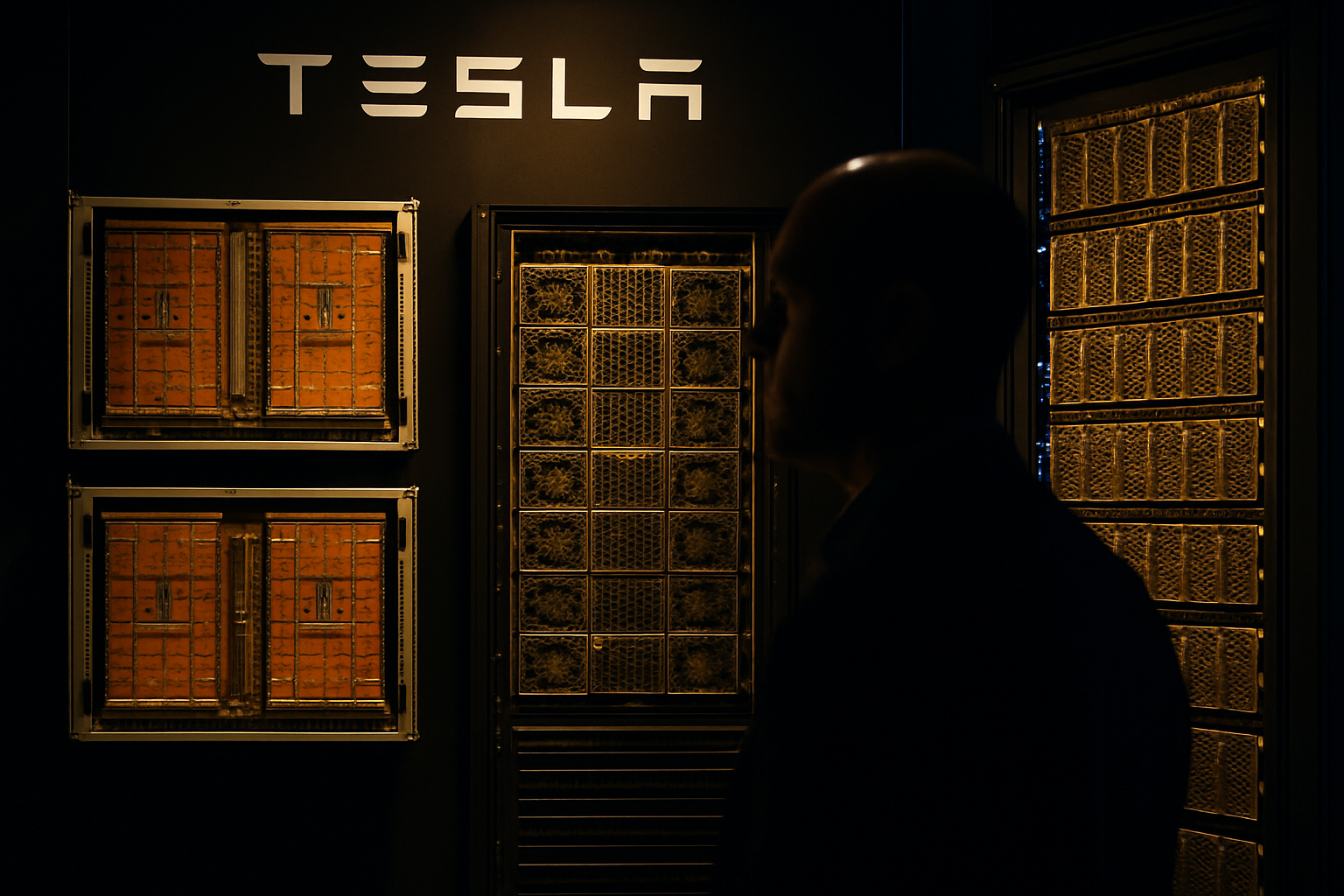In a surprising turn of events, Tesla disbands Dojo supercomputer team, signaling a significant shift in the electric car maker’s artificial intelligence and self driving strategy. The move comes as Tesla reallocates resources, with Dojo’s leader Peter Bannon departing and about 20 team members already moving to the newly formed startup, DensityAI.
The decision has sparked debate among AI experts, investors, and the automotive tech community about what this means for Tesla’s long term driverless technology goals.
Why Tesla Invested in Dojo
Tesla launched the Dojo supercomputer project with the goal of building custom, in house AI chips capable of processing massive amounts of video data from its fleet of vehicles. Unlike traditional AI data centers that rely heavily on Nvidia GPUs, Dojo aimed to give Tesla complete control over its AI infrastructure, optimizing it specifically for autonomous driving tasks.
In 2021, Tesla showcased Dojo’s prototype chips at AI Day, boasting performance claims that rivaled or even exceeded existing solutions for specific vision based AI workloads. Analysts noted that if successful, Dojo could reduce Tesla’s reliance on external chipmakers, potentially saving billions in operational costs over the years.
The Sudden Shutdown
According to sources familiar with the matter, CEO Elon Musk ordered the shutdown after internal reviews suggested that Dojo’s development path might not deliver the expected breakthroughs fast enough. Peter Bannon, a respected chip architect and the head of Dojo, is leaving the company. Remaining team members are being reassigned to other Tesla data center projects.
From a business standpoint, this move may be Tesla’s way of prioritizing faster and more proven AI infrastructure, rather than continuing to invest in a project that demands enormous resources without a guaranteed return.
Dr. Andrea Phillips, a senior AI hardware analyst at Silicon Insights, believes the decision reflects a growing industry trend. Custom AI hardware is incredibly risky. Even tech giants like Google and Amazon, who develop their own chips, still rely heavily on Nvidia because of time to market advantages. For Tesla, the calculus may have been simple, spend years chasing perfection or pivot to what works today.
Meanwhile, autonomous driving researcher Michael Torres sees it as a sign of changing AI strategies within Tesla. Tesla disbands Dojo supercomputer team not because AI is less important, but because the landscape has changed. With rapid advances in generative AI and new compute architectures, Tesla may prefer to ride the wave rather than swim against the current.
The Risk Reward Reality
As someone who has followed Tesla’s AI journey for years, this feels like a classic Musk style pivot. Elon Musk is known for making bold bets, but he’s equally known for cutting losses quickly when a project isn’t delivering fast enough.
The automotive industry is unforgiving when it comes to autonomous driving. Competitors like Waymo and Cruise are pushing forward with fleets already operating in select cities, while Tesla’s Full Self Driving (FSD) still faces regulatory hurdles. In this high pressure environment, the decision to end Dojo could be about focusing all efforts on delivering a commercially viable self driving system as soon as possible.
While the shutdown of Dojo might appear like a setback, Tesla’s AI team still has access to some of the most advanced Nvidia based GPU clusters in the world. The shift could even accelerate development if resources are concentrated on software improvements rather than hardware experimentation.
Nvidia’s DGX SuperPOD deployment in other companies has shown that a software first approach with proven hardware can deliver faster AI iteration cycles. Tesla may now follow a similar model.
Broader Implications for the AI Industry
The story of Tesla disbands Dojo supercomputer team is a reminder of how quickly priorities can change in the fast moving AI sector. Building custom AI chips is an enormous gamble one that only a handful of companies can afford. Even then, the technical and financial risks are immense.
For AI startups and automotive tech companies, Tesla’s move might signal a shift toward partnerships with established AI hardware providers instead of building everything in house. This could open new opportunities for collaboration and innovation.
Lessons From Tesla’s Pivot
Sometimes, shifting direction early saves time and resources. Using the best available tools can be more effective than creating them from scratch. For Tesla, that’s achieving safe, reliable, and scalable autonomous driving.
Even without Dojo, Tesla remains one of the leading players in AI driven automotive technology. Its vast dataset from millions of vehicles gives it a competitive edge no other automaker can match. If anything, the focus may now turn toward optimizing FSD through advanced AI algorithms running on industry standard hardware.
The departure of Peter Bannon and the disbanding of the team will undoubtedly cause ripples in the AI community. Still, Tesla’s track record shows that it thrives on reinvention. The next chapter in its AI journey may be less about custom chips and more about how to harness the best global AI resources to bring full autonomy to the masses.
The decision that Tesla disbands Dojo supercomputer team is not the end of Tesla’s AI dream it’s a strategic detour. In the ever evolving race toward autonomous driving, the company is betting that adaptability, not stubbornness, will win the future.

